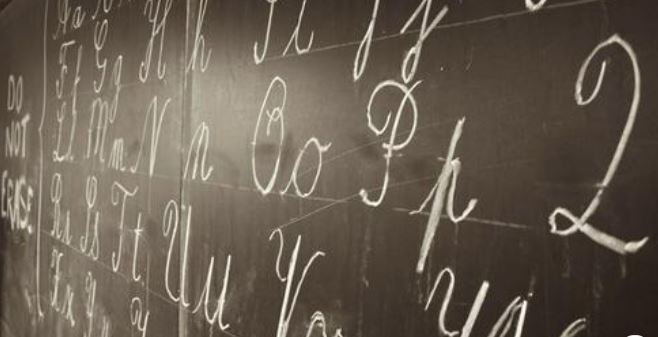
Cursive has been on the decline since 2010. Some of the effects are unexpected
By Hanna Seariac
Is cursive becoming a lost art?
The 2010 Common Core standards began omitting cursive instruction, meaning that many members of Gen Z have never been taught how to read or write cursive, The Atlantic reported. According to The Washington Post, even though this form of handwriting used to be a mainstay of American public education,
“for many students, cursive is becoming as foreign as ancient Egyptian hieroglyphics.”
With the development and prominence of technology, cursive has become increasingly obsolete, but what impact will this have for the future?
According to The Atlantic, this means, “In the future, cursive will have to be taught to scholars the way Elizabethan secretary hand or paleography is today.” This directly impacts archival work. Many written documents from the 19th century and other early time periods are written in cursive. Or they’re written in a type of quasi-cursive that makes it difficult for non-cursive writers to identify individual letters. While it was once taken for granted that American students would know how to read cursive, now that cannot be the case.
Archival work largely depends on a reader’s ability to read hard-to-read texts in shorthand and/or cursive. Will this mean that universities will start having to offer college courses in history programs on how to read cursive? Only time will tell.
Though with AI advancing, archival work might be impacted, too.
In Jan. 2023, researchers announced they were able to use artificial intelligence to transcribe a play written in the 1600s. Using AI, researchers were also able to confirm previously unknown authorship of the play by comparing it to other authors’ work from the time period, per Reuters.
Does losing cursive matter?
Drew Gilpin Faust who wrote in The Atlantic about the loss of cursive told NPR that the loss of cursive means that “the past is presented to us indirectly.”
Using the example of a contract, Faust said to NPR,
“I mean, just imagine if you had some kind of contract that you had signed and you couldn’t read it and someone told you, well, this is what’s in the contract. That’s what’s in the contract. And then later you might find that it was something else. So there are limits in your power, in your sense of how the world works and your sense of how the world used to work when you can’t have access to a means of communication.”
Beyond the connection to the past, losing cursive may have other implications, since writing in cursive has some benefits.
“On team cursive, advocates point to the many studies that have shown that learning cursive not only improves retention and comprehension, it engages the brain on a deep level as students learn to join letters in a continuous flow,” Cindy Long said in an article for National Education Association. “It also enhances fine motor dexterity and gives children a better idea of how words work in combination.”
Who is in Gen Z?
Gen Z or Generation Z consists of everyone born between 1997 and 2012, according to Pew Research.
Cursive writing practice sheets
Now that you know that cursive is falling by the wayside, it may be a good time to revamp your skills. You can find free cursive writing practice sheets online to practice your skills. For example, K5Learning provides free cursive writing practice sheets that you can print and use to relearn your letters.
Who knows? Learning cursive might just be the ticket to archival and historian jobs in the future.